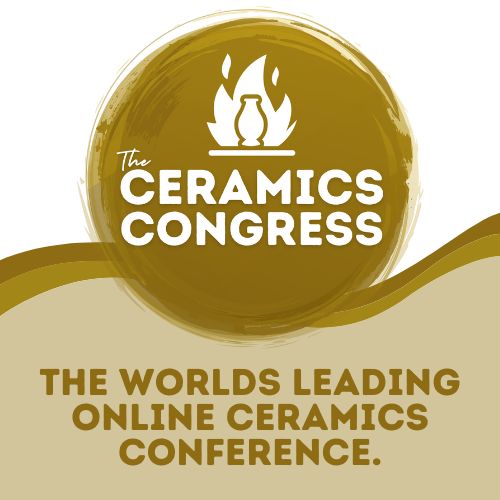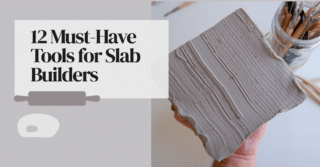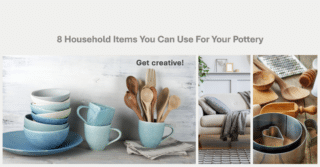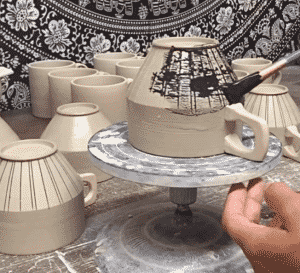Devils Advocate
When I was growing up in the North of England, I always *hated* when my friends or family played “Devils Advocate”.
(I’m not sure if this is a worldwide thing, or just from Lancashire…)
Playing devils advocate is when you think you are being helpful in pointing out all the ways something could fail, and all the potential problems you could face down the road.
“What are you going to do when PROBLEM happens?” shortly followed by..
“I’m only playing devils advocate!”
My family and friends did this all the time…
They thought they were providing valuable information… AKA “Food for Thought”
But in my opinion… they were just being lazy.
After all, it’s very easy to point out a potential problem, and to then walk away.
It’s takes much more effort to point out the potential problem, and then to really take a minute to think about the problem… and offer a potential solution to the problem.
When people do this, they provide so much more value…
The previous quote could easily become:
“Have you thought about what to do when PROBLEM happens?” followed by..
“In my experience, I would suggest the following…”
This type of discussion can put you on the right track, or a completely different tangent and open up new ways for you to develop as an artist, and as a person.
This is one of the reasons I loved my high school art class so much, because I would try my best to create something, usually to convey an idea or a concept…
And then my teacher Sam Rogers would take a look at it.
After I explained what I was trying to achieve, he would ask me a couple of questions, and then point out a problem and hint at a possible solution that would help me reach my goal.
Basically, he would encourage me to follow my ideas and try new things.
But this doesn’t really happen at the moment on Social Media…
The current system of “cheerleading”
Social Media today has fallen into the trap of just being about getting the most likes.
❤ Instagram is all about getting the most hearts on your photos.
???? Facebook is also about getting the most likes and shares on your posts.
Really…
How many ❤’s do you dish out as you’re scrolling through your Instagram feed’s?
Or how about ???? or ❤️ or ???? comments?
Why do you do it?
The way these platforms have been designed, is to give you a small buzz out of liking the post, and the person who posted it gets a small buzz out of receiving a like…
Then you carry on, and get another small buzz, and then again and again.
What happens is…
We become lazy.
We end up scrolling through our feeds and liking as many posts as we can…
Without truly engaging in the content, or putting our brains to work, and providing real value.
– Scroll,
– Stop,
– look for half a second,
– Like the post,
– and repeat.
If we were all together in the studio, we wouldn’t just say “LIKE” over and over again, would we?
No… we would talk about the work, about the ideas, about the techniques…
We would try to understand where someone wants to go with their work…
… and we would try to help them get there…
By providing fresh ideas, new perspectives, and sharing our experiences.
Don’t get me wrong, “cheerleading” is still needed…
We have “cheers” on here instead of likes or hearts, and that’s because people still need to be Cheered on.
I know a lot of us work alone in the studio, and it can be hard to stay motivated…
We need to still celebrate your wins, and give you a moral boost when you need it.
But, it just shouldn’t be the only thing we do.
We need to make a community that strives to help everyone succeed in their own lives, more than just cheering them on.
1) We need to get out of the habit of posting images with no context just to get likes…
2) We need to get out of the habit of just cheering posts and commenting emojis.
Instead we need to learn how to ask for encouragement, and also how to dish it out.
This is how we can truly help each other to reach our full potential.
Anyway…
Why am I going on about this?
Well, I’ve just read a fantastic article about how to do “Constructive Encouragement”.
Here is the article I was reading. (It’s more focused on online marketing and community building – I’ll give an overview here as to how we can use these ideas to fuel our own growth.)
I have copied and shortened the following ideas directly from the linked article.
What is constructive encouragement?
Constructive Encouragement is specific.
“Great constructive encouragement is specific”
Unhelpful feedback is general or shares the responder’s overall perception of the idea or project.
Constructive Encouragement doesn’t care whether something is “good,” “great,” “brilliant,” or “creative.” Instead, it hones in on a distinct element of the idea and offers particular praise.
It reinforces explicit choices that the person asking for feedback has made instead of giving simply applauding the work as a whole.
Constructive Encouragement is based on trust.
A high-five from a stranger is always welcome. But when you get a shout-out from a true friend or trusted colleague, you give it a lot more weight.
“Trust” can seem a high barrier to the ability to offer Constructive Encouragement. But it doesn’t take much to gain trust and build a relationship: an active interest in someone’s success, a generous spirit backed by generous action, and a visible presence in the community or individual relationship is enough.
“From that space of relationship, it’s more effective to offer constructive support rather than just cheerleading. And, people who know the other group members are there to support them are more trusting and willing to ask the tough questions where constructive support would help, rather than superficial questions that just are seeking cheerleading.”
Constructive Encouragement is clued into your goals.
“Encouragement can’t be constructive if it’s not based on your personal goals. Interestingly, the burden for this one falls on the person asking for feedback more than the person giving it.
This is what I meant with my high school art teacher…
If you want truly Constructive Encouragement on an idea or project, you need to explain why and to what end you’re pursuing it.
That gives the people you’re asking for feedback from context in which to give specific and relevant encouragement.
Constructive Encouragement is action-oriented.
Cheer-leading often helps us stay comfortable.
We receive praise and feel content that we’ve done enough.
Constructive Encouragement, on the other hand, should spur the receiver to action.
“A strong community can inspire you, motivate you, or instill the confidence needed to take action faster or sooner and execute more effectively.”
Anytime you offer Constructive Encouragement, focus on what the receiver will be able to do with the information or perspective — not just how it will make them feel good.
Constructive Encouragement is beyond basic.
We all forget the basics from time to time but, generally, Constructive Encouragement should go beyond the well-worn mantras of ceramics or business development and elaborate on how those established truths apply in unique ways.
Valuable feedback comes from people fully utilizing their own experience as potters, ceramic artists, or even business owners. Instead of repeating the usual lines, use your practical knowledge to go deeper.
We should also value differing perspectives. One good piece of feedback can devolve into a chorus of agreement, instead of a real discussion of all the possible viewpoints.
Be willing to say something different.
Constructive Encouragement is invested.
You can hoot and holler about someone’s success or brilliant ideas without caring whether they continue to succeed or churn out genius.
Constructive Encouragement is rooted in your personal investment in someone else’s journey.
“I often find cheer-leading feels like a drive by — something high level, doesn’t take up much time, and is more generic. Constructive encouragement has the ability to cut through the crap and create openings for clarity and new perspectives to come through.”
You’re in a community of like minded people here, all trying to further themselves and their careers.
Let’s all work together to push each other towards success.
Constructive Encouragement is personal.
Constructive Encouragement looks a little bit different depending on the person or the project.
Sometimes you do want a giant pat on the back.
Sometimes you’re looking for a critical discussion about your next steps.
Sometimes you’re open to an equal amount of criticism and sometimes you’re looking to just make the good stuff even better.
Things to think about when you post:
1) Yes, it’s completely fine to just post a photo of something you are proud of – and just ask for cheers.
2) But, if you want “Constructive Encouragement” then you should also try to explain your thought process behind your work, explain what you are trying to achieve, what you have done to get you this far, and then ask specific questions.
Moving Forward…
There is a real and pressing need for specific, invested, contextual, and action-oriented feedback that can only come from a community of people who have been there, done that, and are still doing it everyday.
I think The Ceramics Community is the perfect place to foster growth.
It’s a Brand New Social Media Network for Ceramic Artists…
and it’s Free to Join!
So, join the community, and tell me…
Should these be the guidelines when posting in the community?
Would you add anything to the list?
I’m looking forward to seeing you on the inside, and reading your constructive encouragement 🙂
Cheers,
Joshua
Join here –> The Ceramics Community






Responses